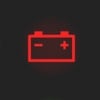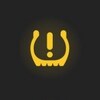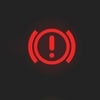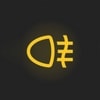What Is Your Dashboard Telling You?
There are few sights more chilling-and frustrating-than a lighted symbol on your dashboard that wasn't visible the last time you turned your vehicle on. Without a moment's hesitation, you turn to WebMD mode, dreaming up the worst diagnosis possible and fretting about how you'll pay the damage.
But don't panic just yet. Depending on what sign has lit up on your dashboard, there may be a perfectly reasonable way to address the issue and make it go dark again. Here are some of the more common dashboard symbols, their meanings, and what you can do to handle the situation.
 Check
Engine/Malfunction Indicator Light
Check
Engine/Malfunction Indicator Light
The check engine light is the big bad of dashboard lights, and according to AutoZone, four of the most prevalent causes are components that need replacing-oxygen sensor, catalytic converter, mass airflow sensor, and spark plugs or spark plug wires. The fifth most common cause, surprisingly, is a loose or damage gas cap; if you readjust your cap and the light is still on, bring it in for service as soon as you can to get the problem addressed.
If the check engine light is flashing, then you should stop driving immediately and have it towed to our service center for immediate diagnosis or repair. A flashing light means that a severe problem is taking place at that very moment, and that driving on it any further can result in catastrophic engine damage.
 Battery/Charging
Battery/Charging
This one can pop up any time of the year, but they're especially prevalent in winter. If this symbol is illuminated, then your battery voltage is below the level it should be at, which could indicate issues ranging from battery cables and alternator belt to the battery itself. This means that you may not be able to depend on your vehicle to start once you've turned off the ignition, so it may be best course to bring it in for service immediately.
 Tire Pressure Monitoring System
Tire Pressure Monitoring System
Tire Pressure Monitoring Systems (TPMS) tell you when the air pressure in one or more of your tires is lower than the recommended PSI. If this symbol is lit, bring your vehicle to the nearest air station and refill your tires to the level recommended in your owner's manual. Doing this sooner rather than later is important
as low tire pressure decreases fuel economy and can lead to increased wear or
even accidents.  Brake
Brake
Ever forget to turn off the parking brake in the morning? That might be a reason that you see this symbol on your dashboard. If it's not the parking brake, it might mean that your brake fluid is low or that there's a problem with your anti-lock brakes. To ensure it is not the former, check the fluid levels yourself or bring the vehicle in for an inspection. If it is a problem with the ABS, a professional diagnostic is the best way to ensure your safety.
 Lamp Out
Lamp Out
With older vehicles, you usually had to confirm having a light out by seeing it first hand-or having a cop stop you and tell you about it. Thanks to this symbol, you'll know when an exterior light is out and you need to replace it.
If you have a light on your dashboard that you don't recognize, do not hesitate to call or bring your vehicle into Linwood CDJR Paducah; we will do our best to let you know what the problem might be and get you back on the road as quickly as possible.
 Battery/Charging
Battery/Charging Tire Pressure Monitoring System
Tire Pressure Monitoring System Brake
Brake Lamp Out
Lamp Out